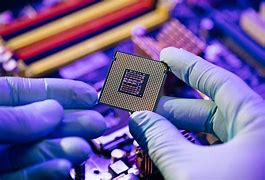Semiconductors, the tiny chips that power billions of electronic devices, are crucial to the global economy.
What Are Semiconductors and Their Uses?
Semiconductors, also known as microchips or integrated circuits, are composed of small pieces of raw materials, primarily silicon. They undergo a process called doping, which enables them to conduct electricity selectively. This unique property allows them to function as electronic switches, utilizing the binary language of 0s and 1s essential for computing.
These chips are integral to a wide range of devices, including smartphones and laptops, as well as vehicles equipped with electronic control systems, remote keys, and sensors. They also support communication infrastructure, like routers and switches, which are vital for internet connectivity. In terms of sustainability, semiconductors play a role in renewable energy technologies such as wind turbines and solar farms. Additionally, they are found in medical devices, including pacemakers and insulin pumps.
Who Produces Semiconductors?
The UK, US, Europe, and China heavily depend on Taiwan for semiconductor production. Taiwan Semiconductor Manufacturing Company (TSMC) supplies over half of the world’s semiconductors, serving major clients like Nvidia, Apple, and Microsoft. Consequently, TSMC has become a focal point in the ongoing “chip wars” between the US and China, with Samsung in South Korea being the second-largest supplier.
ICYMT: GoldBod Takes Over ASM Gold Trade Under New Regulatory Act
Why is Trump Advocating for Tariffs on Semiconductors?
During his second term, President Trump’s “reciprocal” tariffs aimed to encourage domestic manufacturing. Recently, the White House exempted smartphones, computers, and certain electronic devices from tariffs, including the 125% levies on Chinese imports. However, Trump announced that he would soon reveal tariff rates for imported semiconductors. He stated, “We want to make our chips and semiconductors and other things in our country.”
National security concerns have also driven this focus, with Trump mentioning an upcoming investigation into the semiconductor supply chain. He emphasized that the US would not be “held hostage” by countries like China.
How Can the US Increase Semiconductor Production?
In recent years, the US has invested significantly to enhance domestic technology manufacturing. Companies like TSMC have expanded their US operations in response to previous legislation. The US Chips Act has incentivized firms to establish manufacturing in the US, offering substantial funding awards. For instance, the US government allocated $6.6 billion to TSMC for building a factory in Arizona. However, production at this facility has faced delays due to a shortage of skilled workers, a challenge that could hinder the growth of US semiconductor manufacturing. TSMC has reportedly addressed its labor shortage by relocating thousands of workers from Taiwan.
SOURCE: BBC


























